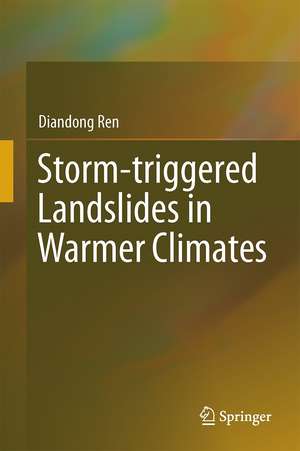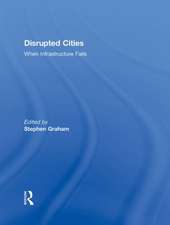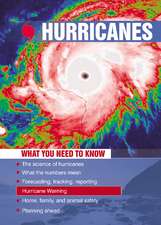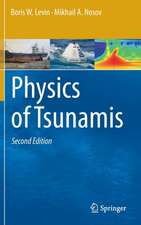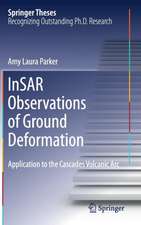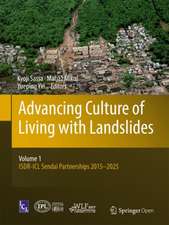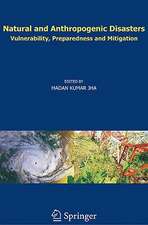Storm-triggered Landslides in Warmer Climates
Autor Diandong Renen Limba Engleză Hardback – 10 oct 2014
| Toate formatele și edițiile | Preț | Express |
|---|---|---|
| Paperback (1) | 567.56 lei 38-44 zile | |
| Springer International Publishing – 24 sep 2016 | 567.56 lei 38-44 zile | |
| Hardback (1) | 650.69 lei 43-57 zile | |
| Springer International Publishing – 10 oct 2014 | 650.69 lei 43-57 zile |
Preț: 650.69 lei
Preț vechi: 765.51 lei
-15% Nou
Puncte Express: 976
Preț estimativ în valută:
124.51€ • 130.33$ • 103.63£
124.51€ • 130.33$ • 103.63£
Carte tipărită la comandă
Livrare economică 31 martie-14 aprilie
Preluare comenzi: 021 569.72.76
Specificații
ISBN-13: 9783319085173
ISBN-10: 3319085174
Pagini: 365
Ilustrații: X, 365 p. 100 illus., 94 illus. in color.
Dimensiuni: 155 x 235 x 22 mm
Greutate: 0.7 kg
Ediția:2015
Editura: Springer International Publishing
Colecția Springer
Locul publicării:Cham, Switzerland
ISBN-10: 3319085174
Pagini: 365
Ilustrații: X, 365 p. 100 illus., 94 illus. in color.
Dimensiuni: 155 x 235 x 22 mm
Greutate: 0.7 kg
Ediția:2015
Editura: Springer International Publishing
Colecția Springer
Locul publicării:Cham, Switzerland
Public țintă
ResearchCuprins
Introduction.- Ecosystem of sloping terrain, soil and vegetation.- Landslides are a double-edged sword.- Strain and Stress.- Landslide dynamics.- SEGMENT-Landslide and applications on various climatic zones.- Changes in extreme precipitation in a future warming climate.- Landslides impact on sea level rise.- Modeling the debris flows in the aftermath of the 2007 Southern California Wildfires.- Opportunity and challenges in a remote sensing era.- The path forward: Landslides in a future climate.- Mathematical skills required to fully understand SEGMENT-Landslide.- Appendix 1: Pressure fields within a simplest granular media - A comment on a recent Science article on locomotors running over sands.- Appendix 2: Cluster analysis.- Appendix 3: Scarp size distribution, who are the players?.- Appendix 4: Basic tensor (and vector) operations.- Appendix 5: GPD analysis of extreme precipitation.- Appendix C1: Lax-Windoff scheme of various order of accuracy (1D followed by a higher order scheme implemented in SEGMENT-Landslide.- Appendix C2: 1D thermal equation solver (semi-implicit C-N scheme).
Notă biografică
Dr. Ren's main interests lie in climate diagnostics, dynamic data assimilation and fluid mechanics, as well as land surface modeling of ecosystem responses to a warming climate, glacier/ice sheet dynamic modeling, natural hazards such as storm-triggered landslides, frozen soil thawing and refreezing processes and soil nutrient fluctuations. He has coded a scalable, extensible and adaptable geo-fluid model (SEGMENT), which offers a unified approach for a disparate set of poorly understood phenomena in geophysical flows/movements such as glacier sudden surge and which is also is capable of describing nutrient content between different vegetation types.
Textul de pe ultima copertă
This volume covers the general physics of debris flows and various approaches to modeling - including the SEGMENT-Landslide approach – as well as the pros and cons of these approaches, and how other approaches are sub-sets of the SEGMENT-Landslide approach. In addition, this volume will systematically unify the concepts of vadose zone hydrology and geotechnical engineering, with special emphasis on quantifying ecosystem consequences of storm-triggered landslides in a warmer climate setting. The reader will find a comprehensive coverage of concepts ranging from hillslope hydrology, porous granular material rheology, and the fundamentals of soil properties to state-of-the-art concepts of enhanced hydrological cycle with climate warming, finishing with a discussion of new approaches for future research.
Caracteristici
Addresses the mechanical, as well as ecological system consequences of storm-triggered landslides, with a state-of-the-science model as the basis Discusses the consequences of a warming climate including uplifting of atmospheric mass center and altered circulation, non-uniform warming of the major ocean basins and effects on the walker circulation and atmospheric rivers Explains in detail the mechanical, chemical and hydrological effects of vegetation root systems Covers societal impacts and proposes an intelligence network for dealing with mudslides Explores the likely impact of sea level rise due to ice sheet disintegration Includes supplementary material: sn.pub/extras
